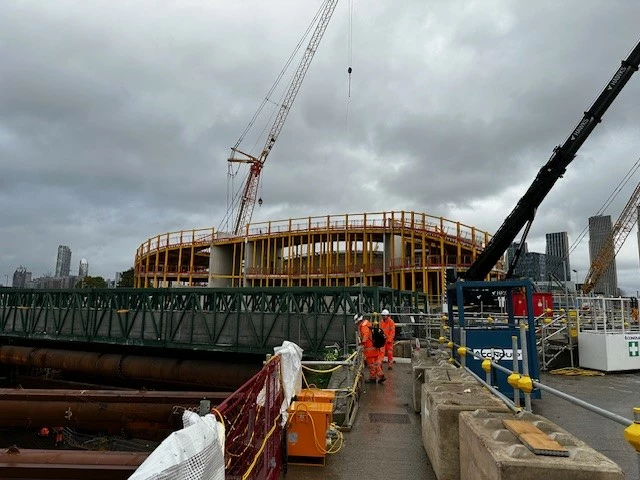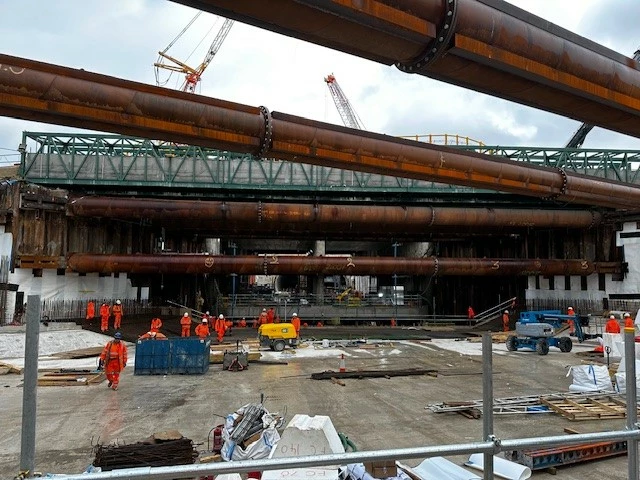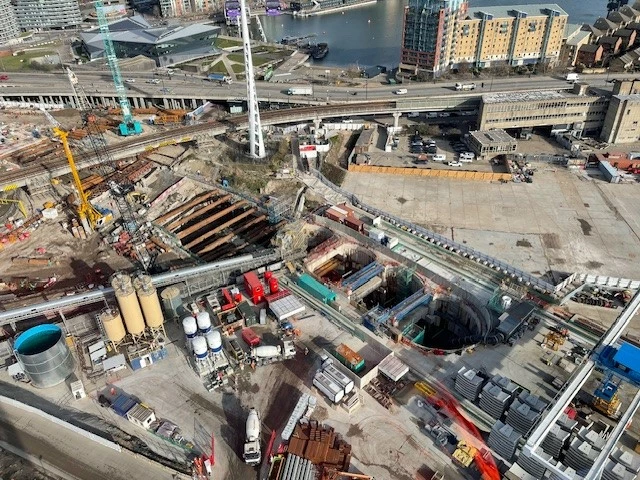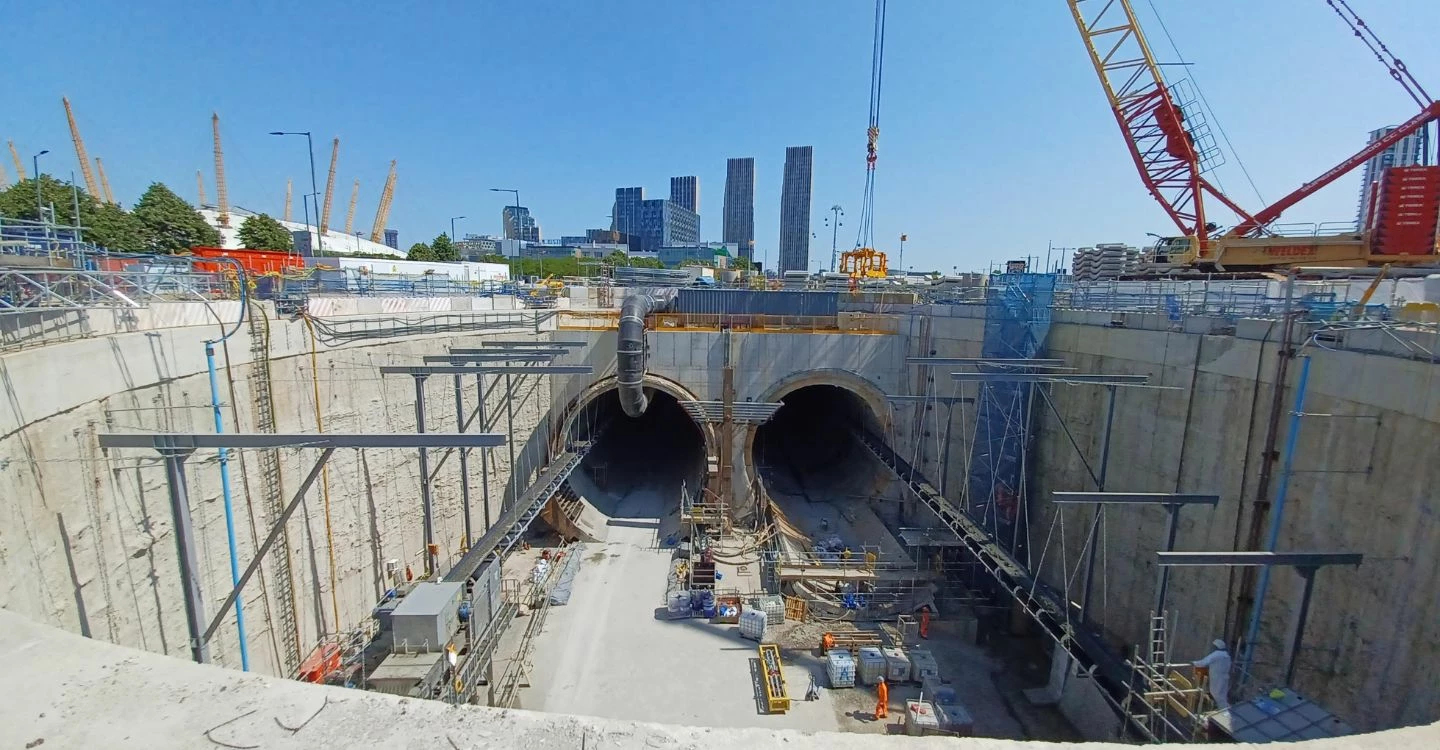Our team have played a crucial role in safeguarding the Silvertown Tunnel project through geotechnical and structural monitoring, utilising advanced instrumentation and real-time data analysis to ensure the integrity of this infrastructure.
The Silvertown Tunnel is a huge new infrastructure project linking north and south London that is currently being constructed to help improve transport links in London, release some of the congestion at the existing Blackwall Tunnel, and improve regeneration in the area.
It is the first tunnel to be dug beneath the Thames in over 20 years, and it is due to open in 2025.
We have been involved with the project since November 2018, carrying out geotechnical and structural monitoring for the Silvertown Tunnel construction, and this work will continue throughout 2024.
Our instrumentation and monitoring work has consisted of the following:
Installation of baseline monitoring instrumentation for Transport for London for 12 months prior to the start of site works.
Further monitoring for the main contractor, Riverlinx, throughout the construction timeline.
Manual and automated instruments are installed in both Greenwich and Silvertown to monitor the construction of the cut and cover, the open cut, and the tunnel portal worksites.
Manual and automated instruments are installed to monitor third-party assets within the zone of influence of the works, including:
- the O2 car parks, Design District buildings, high rise tower (2 Cutter Lane, next to the river), cable car south station and support towers and south river wall in Greenwich
- DLR viaduct and support piers, A1011 Silvertown Way viaduct, and Thames Wharf River wall in Silvertown, as well as both the Eastbound and Westbound Jubilee Line tunnels beneath the site.
SOCOTEC Monitoring France carried out interferometric synthetic aperture radar (InSAR) satellite monitoring for us on this project between September 2021 and July 2023. This consisted of a historical study for baseline monitoring of satellite imaging data covering the period from September 2020 to August 2021. This was followed by monthly monitoring until July 2023. InSAR monitoring uses high-resolution satellite images to determine the vertical displacement of structures and the ground within the zone of influence of the construction works.
Our teams' technical expertise has included the installation of over 2000 individual automated sensors and manual survey targets, over 150 wireless dataloggers/communications nodes and three communications gateways. Our installation methods have included:
- Rotary drilling of boreholes on the foreshore of the River Thames at the south river wall in Greenwich, which has included complicated logistics due to having to access the foreshore from the footpath above, high and low tides.
- Spot welding of strain gauges onto steel props.
- Rope access teams install prisms and tilt sensors on the face of the north river wall.
- The use of boat-mounted mobile elevated work platforms to install equipment on the cable car tower and ship impact protection pontoons in the river.
- Both drilled and magnetic fixings.
Monitoring data was collated from instrumentation from multiple suppliers, including Geosense, Soil Instruments, Worldsensing and Wisen, all processed by our in-house data team for upload to the Calyx online monitoring system. This enables the client and third-party stakeholders (including TfL, Environment Agency, SGN, National Grid, and Knight Dragon Developments) to have access to all of the monitoring data in one place, as well as the production of automated monitoring reports and issue of monitoring alarms in near-real-time.
 Our Foundations department commenced on site in June 2021, completing in August 2022. Their contribution to this collaboration involved thermal monitoring during the concrete curing process for foundation piles and several complex “T” shaped wall panels, extending some 30 metres below ground. Over 5,000 hours of monitoring were recorded during the piling programme. The innovative process of Thermal Integrity Profiling was first used in the UK by ourselves, and has enhanced both the quality assurance and quality control procedures on this project with huge success.
Our Foundations department commenced on site in June 2021, completing in August 2022. Their contribution to this collaboration involved thermal monitoring during the concrete curing process for foundation piles and several complex “T” shaped wall panels, extending some 30 metres below ground. Over 5,000 hours of monitoring were recorded during the piling programme. The innovative process of Thermal Integrity Profiling was first used in the UK by ourselves, and has enhanced both the quality assurance and quality control procedures on this project with huge success.
This example of cross-team collaboration perfectly demonstrates the power of teamwork and the depth and breadth of our service offering that can provide the range of solutions our clients need.





